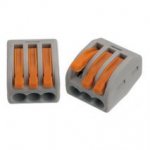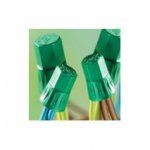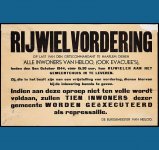Talking endlessly about safety AND doubting your own countries regulations leave you no other choice !
Solve problems at the root and the branches and leaves of the tree can/will be OK. If your PE is certified and tested and you have PE wall sockets life is good and you will be a smiling man wanting to build countless safe amplifiers, DACs and such. Women will be your friend, everybody will say Hi to you.
Solve problems at the root and the branches and leaves of the tree can/will be OK. If your PE is certified and tested and you have PE wall sockets life is good and you will be a smiling man wanting to build countless safe amplifiers, DACs and such. Women will be your friend, everybody will say Hi to you.
Last edited:
Talking endlessly about safety AND doubting your own countries regulation leave you no other choice !
i thought i made it clear before, not doubting about regulations or law, i doubt about my installation following them. law wont sace anyone here from any potential death
yes. based in barcelona, but as I said somewhere, at home I have some plugs with 2 and some with 3 wires, I would not trust on regulations
Have your installation checked and then be here again to talk about a safe mains fed amplifier with PE connection connected to a safe and tested house installation with PE and RCD that leaves no doubt on usability and safety
Last edited:
Just got home after a 3 hour drive and helping out this weekend replacing old wiring, sockets and switches. While the 44 year old installation looked reasonable from the outside we discovered PE wiring everywhere but after measuring we noticed it was not connected to PE at all ! Switches were worn out, wall sockets were broken and behind the wall sockets we saw flexible cabling connected to massive cabling done in various ways (all unsuitable, especially screw connectors). We ended up replacing tubing, complete wire areas, sockets and switches. Still not ready as reality was worse than previously thought. Some wall sockets were daisy chained four times. As some stranded wiring was casted in the concrete (vary rare in the Netherlands as PVC tubes are used in 99% of cases) we had to use the cable joiners as shown in the picture as there is almost no other safe method of connecting stranded wire with solid wire. Best are the green ones but they only work with solid wires.
Goes to show how old installations sometimes are ......
Goes to show how old installations sometimes are ......
Attachments
Last edited:
we discovered PE wiring everywhere but after measuring we noticed it was not connected to PE at all !
THIS is what i referred some messages above to "false sensation of safety". And I guess that situation might be even worse than treating the installation as non-PE but at least not relying (wrongly) on earth safety
No this was DIY at its worst ! 44 Years ago things were different and there were loopholes in the system, since decades the installation must be made by a certified electrician, tested and measured. While doing electrical stuff yourself was relatively easy and the rules were pretty clear, some choose to skip some corners and thus the system was changed. Today doing stuff yourself + no certification means 0 insurance money when things go wrong. A completely new installation without certification is not being energised by the power company !!! If there is a certification paper the installation has been checked, measured and certified. Only the house owner can then be the one that changes stuff and it is his/her responsibility anyway. Any change must also be done by a certified company. Of course one can never be 100% sure as Murphys Law still counts.
Old installations are measured and tested when the house is sold and then often the installation is rejected and has to be redone. This is bad luck for the new owner Attempts to have the owner recertifying the installations (natural gas/electricity, heating, water, sewer) every few years have not been accepted (yet). Houses are expensive here and buying an old cheaper pre-1980 place can be tiresome if electrical and gas systems are rejected. Then high costs can be expected.
Attempts to have the owner recertifying the installations (natural gas/electricity, heating, water, sewer) every few years have not been accepted (yet). Houses are expensive here and buying an old cheaper pre-1980 place can be tiresome if electrical and gas systems are rejected. Then high costs can be expected.
It still is not very hard to do electrical installations right but worse situation is such a DIY installation that must be adapted according the rules. A cheaper method is by having friends over, do the wiring yourself and then have it connected, checked, measured and certified by a certified electrician. Only works when helped out by handy people that have a clue
Old installations are measured and tested when the house is sold and then often the installation is rejected and has to be redone. This is bad luck for the new owner
It still is not very hard to do electrical installations right but worse situation is such a DIY installation that must be adapted according the rules. A cheaper method is by having friends over, do the wiring yourself and then have it connected, checked, measured and certified by a certified electrician. Only works when helped out by handy people that have a clue
Last edited:
It can be refreshing to join in and help as it makes one wiser regarding electrical safety and electrical distribution in general. Maybe the bill will be lower too.
* As a sidenote: after WW2 the Netherlands had to built up and there was no time to loose. Many a granddad knows how to solder natural gas and water copper piping with a flame ! Electricity and central heating were also often done by themselves. Try to explain to them that they have to hire a company and that rules have changed. It still surprises me but many also know how to build a bicycle from scratch. In WW2 all bicycles (which were/are THE means of transport here) had to be given to the occupying forces otherwise there would be executions. After WW2 there was a shortage of bicycles which made people very inventive. Just give them old timers rims and spokes and they will make perfect wheels Respect for their craftsmanship !
Respect for their craftsmanship !
* As a sidenote: after WW2 the Netherlands had to built up and there was no time to loose. Many a granddad knows how to solder natural gas and water copper piping with a flame ! Electricity and central heating were also often done by themselves. Try to explain to them that they have to hire a company and that rules have changed. It still surprises me but many also know how to build a bicycle from scratch. In WW2 all bicycles (which were/are THE means of transport here) had to be given to the occupying forces otherwise there would be executions. After WW2 there was a shortage of bicycles which made people very inventive. Just give them old timers rims and spokes and they will make perfect wheels
Last edited:
Here an order from the mayor of the city of Heiloo on behalf of the occupying forces on 9th of October 1944 to give all bicycles otherwise executions of 10 citizens. We tend to forget the endurance of our old people but they experienced this for real. Lack of food during and after the war, building a destroyed nation and having to do many things themselves. While rules and regulations on energy sources and distribution should be strict I think we have to understand the view of those that built our system.
Attachments
Last edited:
> the cable joiners as shown in the picture as there is almost no other safe method of connecting stranded wire with solid wire. Best are the green ones but they only work with solid wires.
In the US, we use the twist-on connector with stranded or solid wire. The "green" is normally reserved for Ground, we use Yellow and Red (and Blue and Violet, different sizes) for normal conductors.

Wikipedia on WireNuts
Sell-sheet for Ideal brand wire nuts , 5MB PDF
Big wings, compact shape, low-price, damp-resist, underground....
"Str" means stranded wire. It has to say so in the detailed qualification sheet or it is not legal.
This assumes you are not facing Aluminum wire. This is a real problem. Early failures, and the "improved" connectors were not much better. Ideal now offers a purple wirenut which is UL listed for the purpose. Installation is still an issue on old wire with heavy oxide.
That lever-snap connector is less favored in the US, but is fully approved for most common uses. An alternative push-in (no lever) is also widely available.
In the US, we use the twist-on connector with stranded or solid wire. The "green" is normally reserved for Ground, we use Yellow and Red (and Blue and Violet, different sizes) for normal conductors.

Wikipedia on WireNuts
Sell-sheet for Ideal brand wire nuts , 5MB PDF
Big wings, compact shape, low-price, damp-resist, underground....
"Str" means stranded wire. It has to say so in the detailed qualification sheet or it is not legal.
This assumes you are not facing Aluminum wire. This is a real problem. Early failures, and the "improved" connectors were not much better. Ideal now offers a purple wirenut which is UL listed for the purpose. Installation is still an issue on old wire with heavy oxide.
That lever-snap connector is less favored in the US, but is fully approved for most common uses. An alternative push-in (no lever) is also widely available.
The twist-on connector is considered old fashioned here (to my dismay). It really is the best method but it is time consuming to apply them. You will never see those loosing contact as the complete area of contact is large and force is considerable because of the spring). They are not allowed here for stranded wire as the sharp spring cuts through the thin wires in stranded cable. Since decades only solid wire is used in house installations but exceptions define the rule  The push-in connectors were their successor and they are approved but many have experienced that they loose connection as the point of contact is quite small. New versions are better but the type with the lever is preferred. The type with the lever is the standard so to speak. Only old fashioned people like me still use the twist-on as long as they can be bought (all electricians I know use them at their homes
The push-in connectors were their successor and they are approved but many have experienced that they loose connection as the point of contact is quite small. New versions are better but the type with the lever is preferred. The type with the lever is the standard so to speak. Only old fashioned people like me still use the twist-on as long as they can be bought (all electricians I know use them at their homes  ). The color only defines the diameter of the wire allowed and here we use 1.5 mm2 and 2.5 mm2 in house installations so the green version is used almost exclusively. Wire colors are defined by law. Blue for Neutral, brown for Line, green/yellow for PE and black (1.5 mm2) for switched wires like for lamps/lighting.
). The color only defines the diameter of the wire allowed and here we use 1.5 mm2 and 2.5 mm2 in house installations so the green version is used almost exclusively. Wire colors are defined by law. Blue for Neutral, brown for Line, green/yellow for PE and black (1.5 mm2) for switched wires like for lamps/lighting.
There are no aluminium wires here (except thick ones in high energy installations with some restrictions). They are never used in low voltage house installations. No one is fond of the high power thick aluminium cables because of difficulties in mounting them and they become brittle after time. Reusing aluminium cabling is a no no.
There are no aluminium wires here (except thick ones in high energy installations with some restrictions). They are never used in low voltage house installations. No one is fond of the high power thick aluminium cables because of difficulties in mounting them and they become brittle after time. Reusing aluminium cabling is a no no.
Last edited:
Earth and neutral are common in TNC network, mostly feed from utillity (4 wires for 3 phase systems) and after RCD they are split (you have 5 wires), for single phase: two wires and after RCD three wires (N & PE are split).
If You have TT network, You have two wires for income (single phase system) and after RCD (inhouse distribution) You have 3 wires.
I You have TNS network, then You have 3 wires for income (N & PE split), also after RCD You have 3 wires, most imune network, because PE is connected to star point of Your source (it is not common in public distribution).
Every coountry have their regulation, so fullfill it and You will be safe in either way. In my country it is TNC, at income my N & PE are common (PEN conductor is coming from utillity), also my local grounding (Earth) is connected to the PEN point.
If You have TT network, You have two wires for income (single phase system) and after RCD (inhouse distribution) You have 3 wires.
I You have TNS network, then You have 3 wires for income (N & PE split), also after RCD You have 3 wires, most imune network, because PE is connected to star point of Your source (it is not common in public distribution).
Every coountry have their regulation, so fullfill it and You will be safe in either way. In my country it is TNC, at income my N & PE are common (PEN conductor is coming from utillity), also my local grounding (Earth) is connected to the PEN point.
- Status
- This old topic is closed. If you want to reopen this topic, contact a moderator using the "Report Post" button.
- Home
- Amplifiers
- Power Supplies
- IEC C8 power socket, main ground and security


